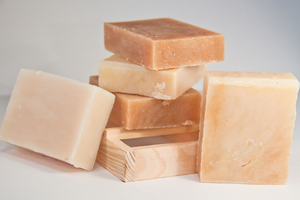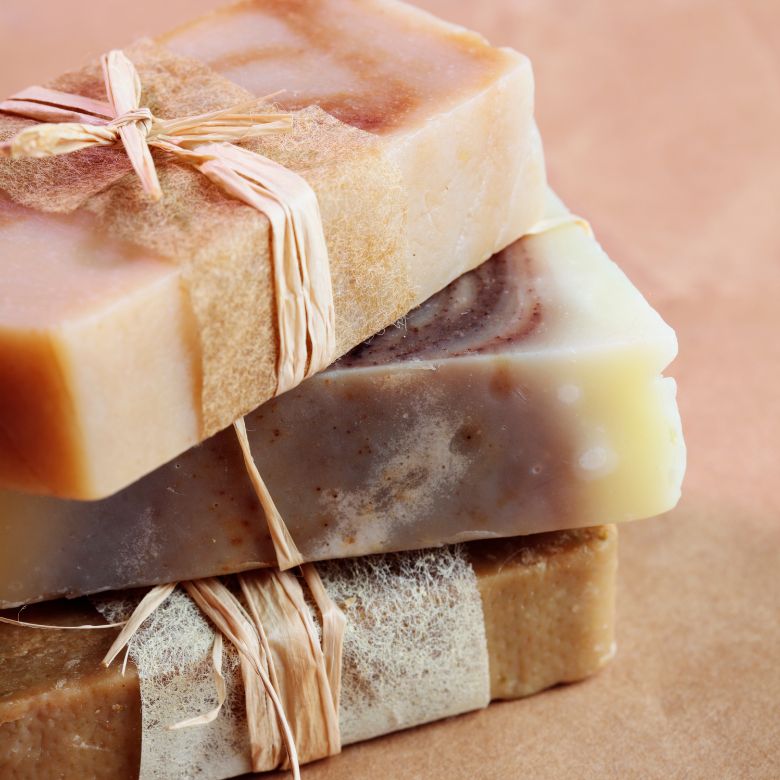Soap is one of the oldest washing agents known to man. We appreciate it for many reasons: it is cheap, effective, and commonly available. The commercial market offers various types of soap. These mostly include sodium soaps, which are enriched by fragrances and sold as bars or fluids. What should we know about the properties and applications of sodium soaps? Let’s get some answers!

What is a sodium soap?
Without a doubt, the sodium soap remains the unquestionable number one among detergents (universal washing agents). But what is it, actually? It is the so-called surface active agent (surfactant). It reduces surface tension on the surface of liquids, generates foam and eliminates dirt particles.
Sodium soap is an organic compound, a sodium salt of higher fatty acids of plant or animal origin. It’s made by combining fatty acids and a basic substance (sodium hydroxide).
What is sodium hydroxide?
Hard soap is produced with the use of sodium hydroxide. The aqueous solution of that substance is also known as soda lye or caustic soda (molecular formula: NaOH). This inorganic chemical compound is a very strong base with no colour or odour. It dissolves very well in water. It is also corrosive and reacts with acids.

Who invented sodium soap?
The first hard soaps were produced by Arabs as early as 1,500 years ago. They were invented as an alternative to the greasy and impractical grey soaps. As the time passed, the recipe for sodium soaps was improved. They were enriched with fragrances, herbs and natural oils. The Arab soaps, manufactured in places such as Aleppo, became a luxurious export good valued all over the world.
Sodium or potassium soap: which one is better?
If we take a closer look at soap bars, we will notice that they are available in two colours: white or grey. As we already know, a white soap contains sodium hydroxide. The grey soaps contain caustic potassium: the potassium hydroxide (KOH). Both types of soap are odourless and produce a lot of foam. They can be used for washing clothes or for day-to-day hygienic routines. The difference between them lies only in that the sodium soap is harder than the greasy grey soap, and it is more difficult to dissolve it in water.
Sodium soap: properties, effect on skin
How to recognise a sodium soap? Its characteristics include a milky white colour, and hardness. It takes the form of a bar or flakes. A solid soap is difficult to cut in half and even more difficult to break. Such a soap does not get soft immediately after being dropped into water, and preserves its original shape for a long time.
How does a sodium soap act on skin? It is an efficient agent that, when combined with water, quickly removes dirt and grease from the skin. Besides, the soap eliminates bacteria and soothes irritated and inflamed skin… It is one of the cheapest generally available disinfectants.
We should also mention the potential adverse reactions of sodium soaps. If even a small amount of soap gets into the eyes, it has an immediate stinging effect. Soap suds that remain on the skin for a long time also cause different reactions. These include redness, stinging, changes in pH, or destroying the natural bacterial flora.
The application of sodium soap
People have used the sodium soap for centuries, as its application is extremely broad. It is a natural washing and body care agent that can be effectively used both by adults and by children. It turns out to be a good substitute for bath gels and lotions. It is worth using for home peeling treatments (such as foot and hand baths).
Sodium soap flakes may also serve for washing fabrics (mechanically or by hand). White sodium soaps can also be found at hotel rooms and in spas. This is since they appear to be more elegant than the grey soaps, plus they are universal. In the industry, sodium soaps are used, for example, in the manufacture of professional cleansers or plasticisers.
- https://www.sciencedirect.com/topics/chemistry/sodium-salt
- https://www.sciencedirect.com/science/article/abs/pii/S0021979705006089
- https://www.britannica.com/science/soap
- mydła. W: Encyklopedia techniki CHEMIA. Warszawa: WNT, 1965.